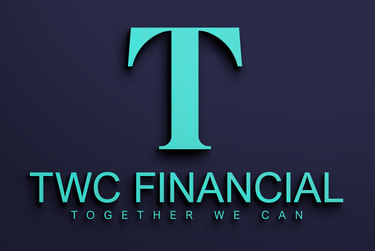Investing for Education
How to Grow Your RESP Savings Faster
Taimoor Tariq
1/3/20246 min read


$2,500
You contribute $2,500 every year, and the government will match 20% of that, $500 a year
The government matches 20% of your contributions, $7,200 maximum for each RESP
Lifetime contribution up to $50,000 per child
$7,200
$50,000
What is an RESP?
An Registered Education Savings Plan is a government-registered plan that has been designed to help you save for your beneficiary's post-secondary education by allowing your investments to grow within the RESP tax-deferred until they are withdrawn. One of the main perks – free money from government grants and bonds.
With an RESP, you can grow your beneficiary's education investment on a tax-deferred basis, without incurring taxes on capital gains, interest and dividend payments as long as your money remains in the plan. Plus, your RESP may eligible for several federal and provincial grants, with additional grants for low to middle-income families.
How RESPs work?
You contribute money into your child’s RESP. The government will then contribute an additional 20% on the first $2,500 contributed annually, up to a maximum of $500 a year. That can add up to $7,200 over the lifetime of your RESP, per child, in grant money through the Canada Education Savings Grant (CESG). You may also be eligible for the Canada Learning Bond (CLB) and additional provincial grants.
You can set up an individual or family RESP. An individual plan is meant for one child, whereas savings in a family plan are shared among multiple children. Learn more about the difference between a family and an individual RESP below.
There are no annual contribution limits or any limits on the number of RESPs you can have. Plus, you can contribute up to $50,000 per child, and can contribute to an RESP for up to 31 years. Learn more about contribution limits below.
Individual or Family RESP: Which is right for you?
If you can’t decide which type of RESP to subscribe to, talk to an advisor. Saving for education may be difficult to fit into an already tight budget, but an advisor can also guide you on ways to save for post-secondary costs. The government grant portion of RESPs is “free” money, so making regular contributions may be well worth your time.
Individual RESP
Unlike a family plan RESP which requires the beneficiary to be under 21 when they are named to the plan, this age limit does not apply for an individual plan RESP. An individual plan is great for the one-child family which doesn't have to worry about sharing those savings. It’s also a good option if you would like to open an account for someone who isn’t related to you, or if you want to save for your own future education needs.
Family RESP
If you have more than one child, a family plan may be the right option as the savings can be shared among all your children. In a family plan, all beneficiaries must be related, by blood or adoption, to the plan subscriber, such as grandchildren, great-grandchildren, brothers or sisters. Beneficiaries can also be added or changed over the RESP's lifetime. When allocating the money, each beneficiary must use a portion — although not necessarily equally. This means that, if you have a child who will be going to medical school, he or she will be able to utilize more of the savings than another child who does a college diploma in media studies.
Two fundamental questions are: who will go to school first and whose program will be more expensive? We advise parents to take a look at how far away school is, how much it will cost when the kids are ready to go, and who is likely to go to a post-secondary institution and who isn’t.
In both plans, the federal government will grant up to a maximum of $7,200 per beneficiary until they turn 18 years of age. In a family plan, grant money can be shared, but the lifetime maximum of $7,200 per beneficiary must be respected. Any portion of the grant not used by beneficiaries must be returned to the government upon closing the RESP. And in both cases, RESPs must be terminated after 35 years of existence.
Using your RESP funds
You can start withdrawing funds from your RESP for educational purposes as soon as your child has graduated high school and has officially enrolled in a qualifying post-secondary educational institution.
Funds can be withdrawn from an RESP to help pay for any education-related costs associated with full-time or part-time enrollment in qualifying post-secondary educational institutions. This includes programs offered by universities, community colleges, trade schools, vocational schools, technical schools, religious schools, CEGEPs, as well as distance learning or correspondence learning institutions. institutions.
View a list of RESP qualifying post-secondary educational institutions to see if your institution qualifies.
How to withdraw from an RESP
Understanding how RESP withdrawals work can help you get the most of your RESP savings. To start you down the right path, we’re going to simplify some of the RESP jargon for you, starting with four key concepts.
The Subscriber is the person who sets up the RESP and the only person who can contribute to or withdraw from the plan.
The Beneficiary is the person whom the RESP is for.
To make an RESP withdrawal, the subscriber must provide proof of enrollment of the beneficiary as either a part- or full-time student, in a qualifying post-secondary educational institution.
There are two types of educational withdrawals:
The Post-Secondary Education (PSE) withdrawals are withdrawals of the contributions made by the subscriber.
An Education Assistance Payment (EAP) is a withdrawal of the investment earnings and the government grant portions of the RESP, which can only be paid to the beneficiary. All funds contributed by government programs like the Canada Education Savings Grant (CESG) and the Canada Learning Bond (CLB), and provincial grants/incentives (including the Quebec Education Savings Incentive and the British Columbia Training & Education Savings Grant), along with any investment income that was earned inside of the RESP, are designated as the EAP portion of your RESP.
How are RESP withdrawals taxed?
Now that you understand there are two types of RESP withdrawals for educational purposes (PSE and EAP), you’re ready to understand how they are taxed differently.
Withdrawals of PSE are not taxable
You do not get a tax deduction when you contribute to an RESP and so taxes have already been paid on the money you contribute directly to the RESP, meaning this money can be withdrawn tax-free. Withdrawals of EAP are treated as taxable income in the hands of the student
Most students have enough tuition and education tax credits (and a low enough income) that they will likely pay very little or no income tax as a result of RESP withdrawals.
If the student is expecting to pay income tax that year, it may be beneficial to set money aside to pay the tax bill the following year.
What is the maximum RESP withdrawal amount?
There is no limit on the amount of PSE contributions that can be withdrawn.
EAP withdrawals have a $8,000 limit (or $4,000 if the student is enrolled part-time) during the first 13 weeks of schooling. Once the 13 weeks have passed, any amount of EAP can be withdrawn.
What if the beneficiary does not continue his or her education after high school?
If the beneficiary does not pursue post-secondary education, there may be other options other than closing the plan. To fully understand your options, visit the Canada Revenue Agency (CRA) guide on using your RESP funds.
Apply for RESP grants and bonds
We’ll help you file the applications necessary to receive the following grants and bonds:
British Columbia Training and Education Savings Grant (BCTESG) – a one-time $1,200 RESP grant for eligible children residing in BC
Canada Education Savings Grant (CESG) – annual grants that based on your contributions
Canada Learning Bond (CLB) – annual bond for families that meet certain income eligibility requirements
Make Contributions
You can, and we encourage you to, set up regular auto-deposits to grow your RESP and take advantage of the CESG.
Here’s the math:
If you contribute $2,500 a year, you’ll make the most of the CESG and receive the maximum grant of $500 a year up to the end of the year a beneficiary turns age 17 (or more for low and modest-income families).
Also note the RESP lifetime contribution limit is $50,000 and the CESG lifetime maximum is $7,200 per beneficiary.
Grow your Investments
You’ll also need to make decisions about where to invest your RESP money. This is where our wealth management professionals can really help. We look at your family’s financial plan and use investment strategies that consider when you’ll need the money.
RESPs are tax-deferred, so as your investments grow in the account you don’t pay any immediate tax. As the money is withdrawn, the beneficiary will be taxed on the growth of the investments and any grants or bonds, often at a low tax rate because they’ll be students.
Get Portfolio Reviews
How often depends on what investments you choose and their risk levels. We recommend reviewing your investments at least twice a year.
Need Financial Advice?
The first step to optimizing your finances is just a phone call away! Speak to a TWC advisor today to learn how to ensure your finances are secure and growing
We're here to help
Contact
info@twcf.ca
Socials
Subscribe to our newsletter
+1 (778) 926-2894
